Skip ahead
- Welcome to the World of SEO
- Search Engine Optimization Basics: What is the Semantic Core?
- How To Create Semantic Core
- Describe Your Company with Tails and Specifiers
- Building your Semantic Core to Begin Website Optimization
- Keyword Research Tools List Beyond Keyword Planner to Build a Semantic Core
- Start An Excel Document
- Keyword Research
- Divide a Semantic Core Into Few Sub-cores for Each Theme
- How to Do a Quick Keyword Research in Your Niche
- Look at Competitors
- The Importance of Stop Words in Keyword Research
- Best SEO Techniques: How Many Words Should be in my Semantic Core?
Welcome to the World of SEO
Understanding what Search Engine Optimization is and how to find the best keywords for SEO to your advantage is what will separate you from your competition and bring your business to the next level. More often than not, users are either entirely overwhelmed by the concept of SEO or they simply believe that it is a hoax that isn’t worth the money. As it turns out, SEO and semantic core optimization is not magic, nor is it a trick. It is a series of tried and true methods of professional SEO services used on a website in a meticulous and planned fashion in order to consistently increase the amount of traffic brought to it. The unavoidable side effect of increased traffic to a website is its elevation in search engine rankings.
We want to make one thing clear: everything that we will be writing about in this series has not only been verified by several other web development sites but also used and implemented by them as well. This is practical advice used by real people at real companies.
This is our first article in a series whose main goal is to teach you the ins and outs of search engine optimization. We advise that you read the articles in this series carefully because they are packed with useful tips and tricks that, if followed precisely, will bring you enormous online marketing success. This first article focuses on a crucial aspect of SEO: the construction and use of the Semantic Core.
Search Engine Optimization Basics: What is the Semantic Core?
Your company website is a representation of your business, plain and simple. We already know that design and layout play a huge role in user experience, but just as important is the content that makes up the bulk of the site. The best websites employ something called a semantic core, which can loosely be defined as an ordered set of words and phrases for which users will search and be brought to your website from search engines. These words and phrases are used throughout your website in order to be “picked up” by search engines when users search for them.
Not all words are created equal, however. Words are divided into categories of high, medium, and low frequencies, a ranking based on their popularity. For example, the phrase “Web Design” will be high-frequency (HF), “Web Design Company” will be at a mid-range frequency, and “Top Web Design Company in Montgomery County” will be low-frequency (LF). As you can probably guess, the more popular a word or phrase is, the more competition you face when trying to use it as a representation of your business (this is because many other people are doing the same thing). On the same note, the more competitive a keyword or phrase is, the better the results will be when using it as a representation of your website in your semantic core. Being at the top of Google’s rankings for competitive keywords and phrases is a trying task, but one that can yield invaluable results.
Semantic Core And Google
Google's algorithms are constantly evolving to produce the most relevant results for user requests. To understand and rank content, Google strives to use a more human-like SEO approach. Many factors affect the readability of content: consistency, sentence structure, content structure and literacy. It is important that your text does not look like a list of keywords and phrases.
Google uses and is constantly updating algorithms that it uses to analyze your site. The search engine uses an extensive database to find relationships between pieces of content on your pages.
In 2013, there was an Hummingbird update that analyzes a page not by individual keywords that were included in core search engine analysis, but by all of the content and its internal relationships presented on the page.
In 2015 appeared the RankBrain - a machine learning algorithm, which allows to provide more analysis and selection of pages that are most relevant to your requests through analyzing all keywords used on the website.
All these innovations allow the Google search engine to analyze and select the most relevant pages not only for the main requests, but also to select pages covering related topics.
How To Create Semantic Core
Describe Your Company with Tails and Specifiers
It is important to keep in mind that up to 40% of all requests users search in Google will never be regularly sought after. By this we mean that while you may find a unique way to describe your business with proper semantic keywords, other people will not search for your company in that way. It is only through using competitive and relevant descriptors or specifiers can your website really come to the forefront of Google’s top ranks.
The best advice on how to find keywords best for SEO is to collect HF and mid-range requests with many qualifiers mixed throughout. Here are a few examples:
- “Affordable custom web design services for small business”
- “Custom web design and development in Philadelphia area”
- “Best professional web design agencies”
It is important for you to sit and think about how people may be searching for your business, and then to construct a string of possible searches that contain HF and mid-range frequency keywords and phrases and use them throughout your website. They will become integral parts of your semantic core.
Building your Semantic Core to Begin Website Optimization
We know that the quality of both your company and website is far above that of your competitors, but don’t write them off just yet. By looking at your competitors’ websites, you can begin to gather words and phrases that would be helpful additions to your own semantic core. Check out the headlines they have on their websites. Do a couple of Google searches and see if their website appears as a top submission. You can even view Google’s recommended semantic keywords.

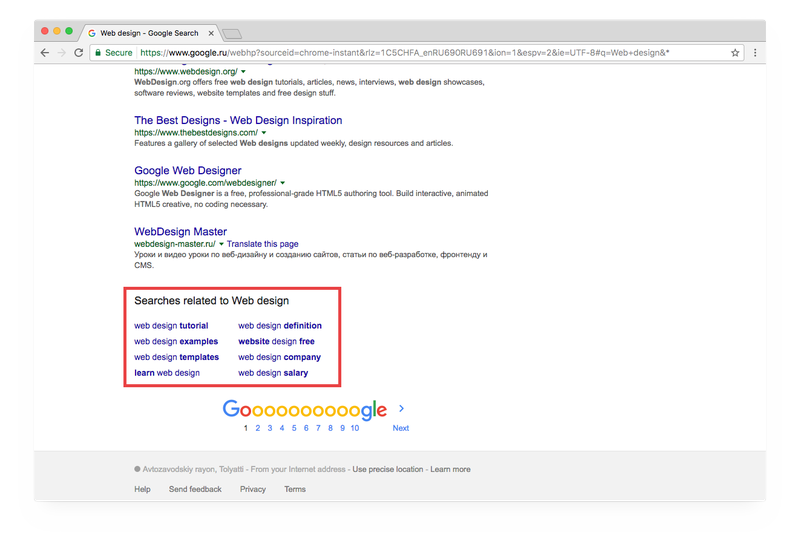
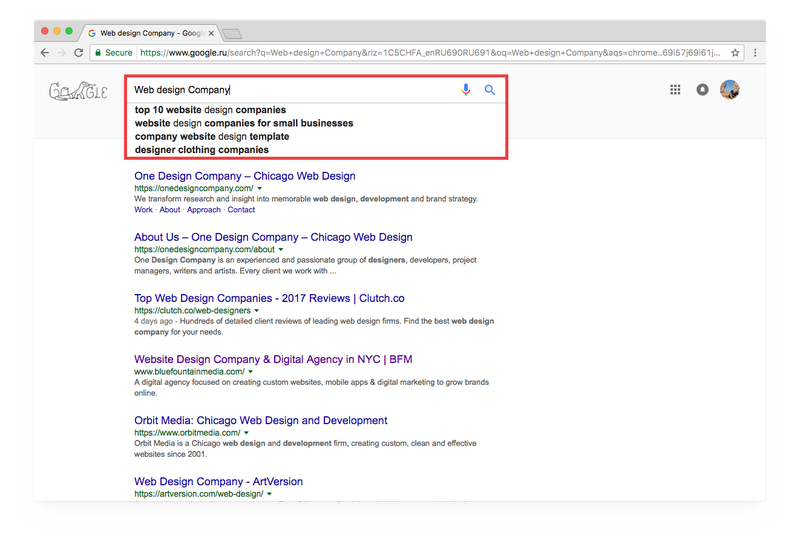
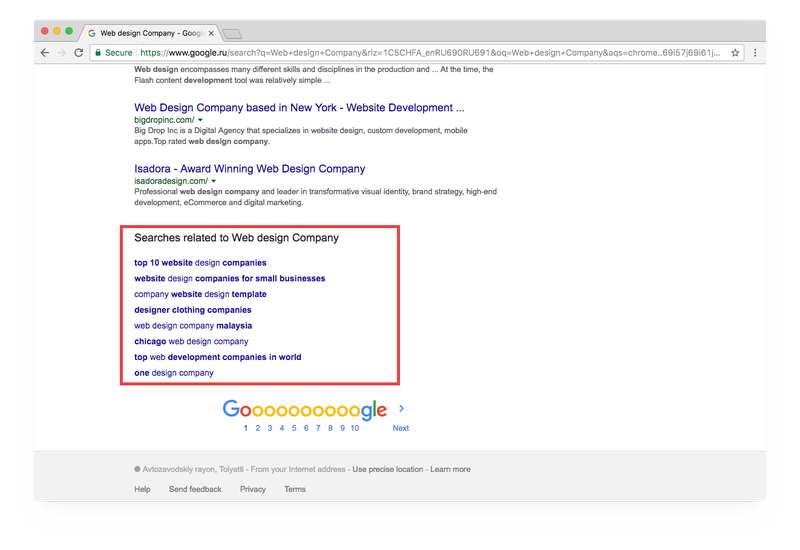


You should also remember that not everyone searching for your business knows it as well as you do. It might be helpful to poll friends and family with the simple question of “What would you type into Google in order to find my firm’s website?” This type of self-conducted research will provide you with the insight necessary to bring organic traffic to your company site.
We ask that you use caution when working with fee-based online marketing programs. It is true that they will help you optimize the routine operations of SEO, but not one of them will be the “all-in-one” solution to receiving professional results online.
The best way to understand the value of words and phrases in Google’s search rankings is to consult with Google itself. Google AdWords will be your best friend in building a semantic core for your company page. It uses huge aggregate sets of data in combination with localization techniques in order to determine how many times a particular word or phrase has been searched and even how many times it was searched for in your area. Pretty cool right?
When constructing a semantic core, it typically takes us anywhere from five hours to a few days. You are just as capable!

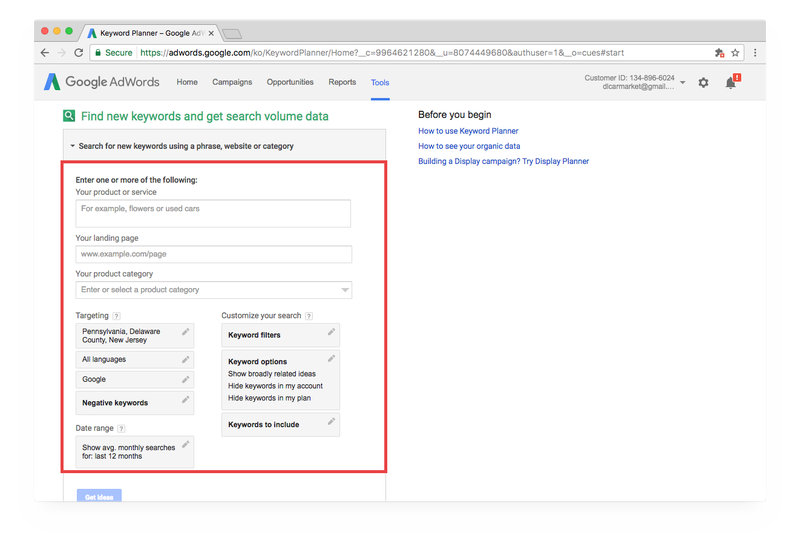
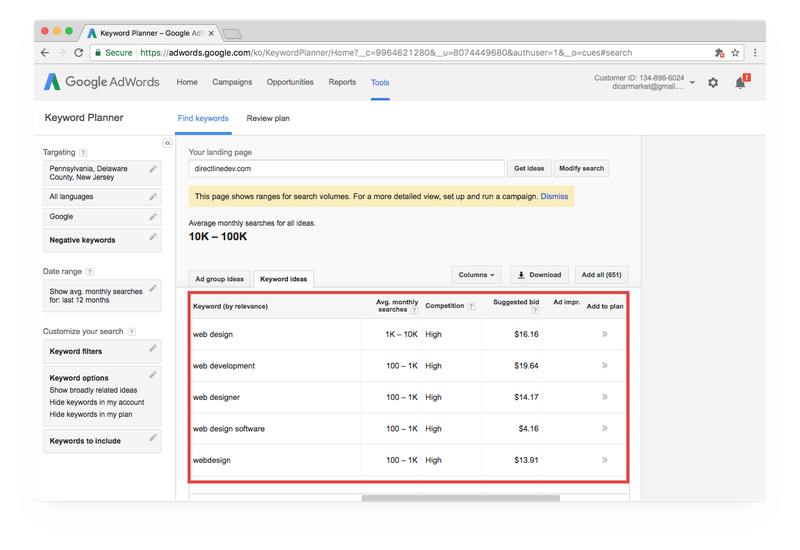
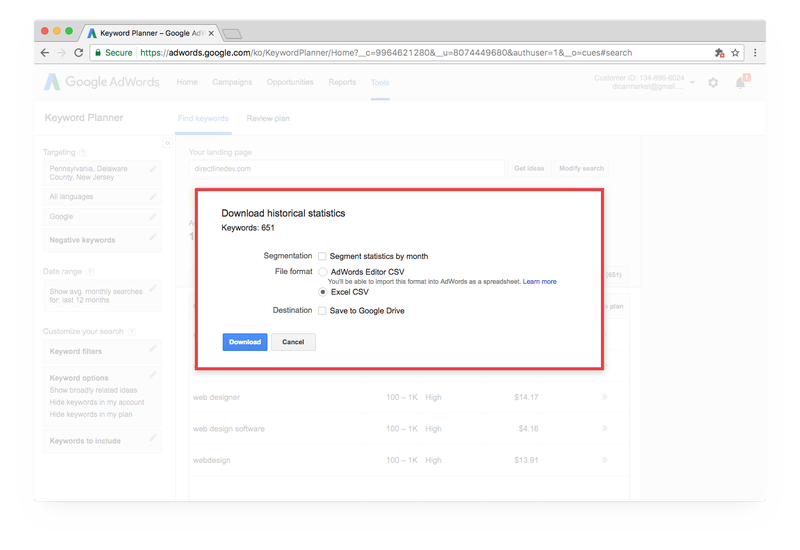
First, sign up for Google Adwords.
Next, open up Google Planner and begin researching various keywords and phrases. Make sure that you specify the region in which you would like users to search for you. It’s great if someone in California finds your website. However, if you are in Philadelphia, Denver, or Austin, they probably don’t plan on hopping on a plane to fly to you. That’ll only be a waste of your time.
Now, with your list of several hundred keywords and phrases, compile it into an organized document and save it for later use.
Keyword Research Tools List Beyond Keyword Planner to Build a Semantic Core
What is keyword research? Keyword research is a comprehensive niche and competitor analysis which main aim is to determine the most popular user requests. How to find SEO keywords for the website? You can use analytics tools such as Ahrefs and Keyword Planner to easily determine the list of relevant words and phrases for your site. Both of these tools help you select keywords for relevant requests, but there are a few differences.
There are many other services for creating a semantic core on the internet - some are paid, some offer a free trial for a few days and some are free. At Direct Line Development, we prefer to use a combination of a few different tools that vary by type to achieve the best result for websites. In our work we use two main tools: Ahrefs and Keyword Planner.
Keyword Planner, unlike Ahrefs, is a service that allows you to find new keywords and get data on the number of requests and predictions for the future. The main benefit of this service is the price - Keyword Planner is a free service.
Ahrefs will not only help you select your main semantic keywords, but will also display competitive domains and frequency of keyword phrases, but not for free.
Oftentimes, various techniques allow you to enhance an already existing list of words. We recommend that you use, in addition to Google Keyword Planner, one of the major SEO services such as Ahrefs or Semrush and add them to your keyword research tool list. Each of them has a semi-automatic process to create a semantic core and they work the way they were designed. More recently, Google has been effective in helping build an organic semantic core by suggesting to a user the semantic keywords related to their search that people have used.
For the collection of Google suggestions, there are a few programs that can help. A free version is going to be sufficient for smaller projects.
Start An Excel Document
You can use Excel to work comfortably with semantic keywords. Create a table with two columns:
- Keywords;
- Average Monthly Searches.
In the first column indicate the key requests of the semantic core, which will rank your site. In the second column place the data on the frequency of requests on these words and phrases.
Doing a little analysis and comparing the numbers from the second column, you can understand which requests have HF, mid-range frequency and LF. Filter the keywords from higher to lower and select the word or phrase with the highest frequency, which will be the main keyword for your site’s page.
Keyword Research
Now, when we can easily answer the question “Semantic core - what is it?”, it is worth understanding how to create a keyword map. To begin with, it's worth doing a keyword analysis study. The success of your promotion is not related to the number of keywords that will fill your content, but to the quality of these relevant requests.
Keyword research is the process of understanding what language your target customers are using when they search for your product, service or content. Which then involves analyzing, comparing, and prioritizing the best opportunities to use keywords on your website. To select the best keywords for your site pay attention to several parameters:
Query Volume
Before you create a semantic core by which your site will be ranked, you need to determine the volume of relevant requests. You can pick up dozens of similar semantic keywords and phrases, but only one or two may suit you. The query volume for each keyword can be found in Google Keyword Planner and Ahrefs and with the same tools you can select the appropriate for your business.
The volume is the arithmetic average of the number of searches performed on a semantic keyword per year. It won't tell you how much traffic you'll get for a given phrase, but it will help you distinguish HF keywords from lower-ranking ones.
There are three important things to note about this number:
It is the number of searches performed, not the number of people who performed that search. There are cases where someone might search for a keyword such as "web development" many times a month. All those searches add up to a search frequency, even if they come from the same person.
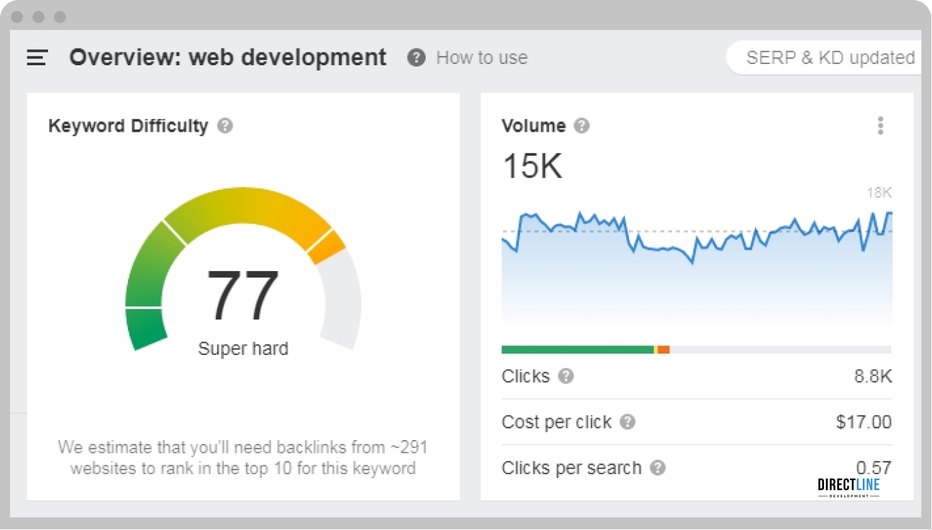
It won't tell you how much traffic you'll get on top. Even if you can get to the top, your keyword traffic will rarely exceed 30% of that number. And that's even if you're lucky.
That's the arithmetic average for the year. If this keyword is searched 120k times in December and no more searches at all for the remaining eleven months of the year, its monthly search frequency will be 10k (120k/12 months)
Note that search volume can vary depending on the analysis tool you're using. This is because each tool counts and updates this metric in different ways
Query Intent
When you're selling a product or service, it seems natural to put a collective name for a group of items or a category as your main semantic keywords requests. But it's not that simple. For example, if you specialize in the web design services, when promoting a sales page, it is better to allocate the list of services or a location as main key requests, rather than being limited to the generalized "web design" or "web design service". There is a high probability that such a keyword request will rank better blog pages or informational sites.
Let’s look at a more detailed example. For example, you specialize in web design and this keyword seems to fit you. You check its performance through Ahrefs service and it turns out that in addition to this keyword request, you can attract clients for other queries, which also fit you.
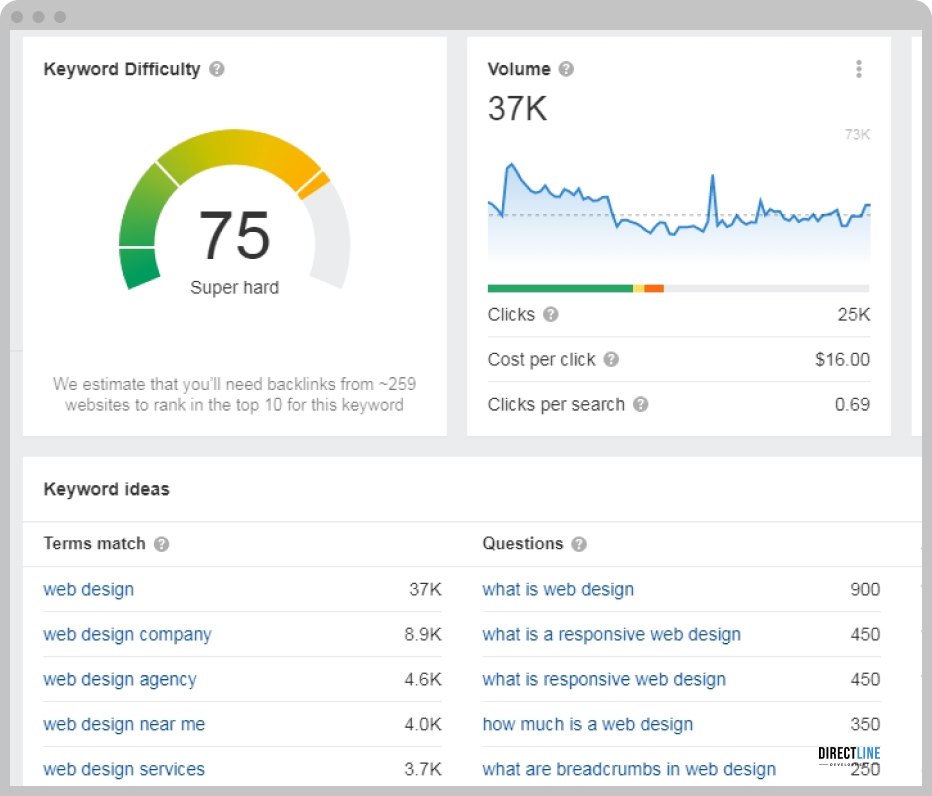
If you look at the search engine results - you can see that this request is more likely to carry information content as the search engine result page is filled with blog articles about what web design is in general.
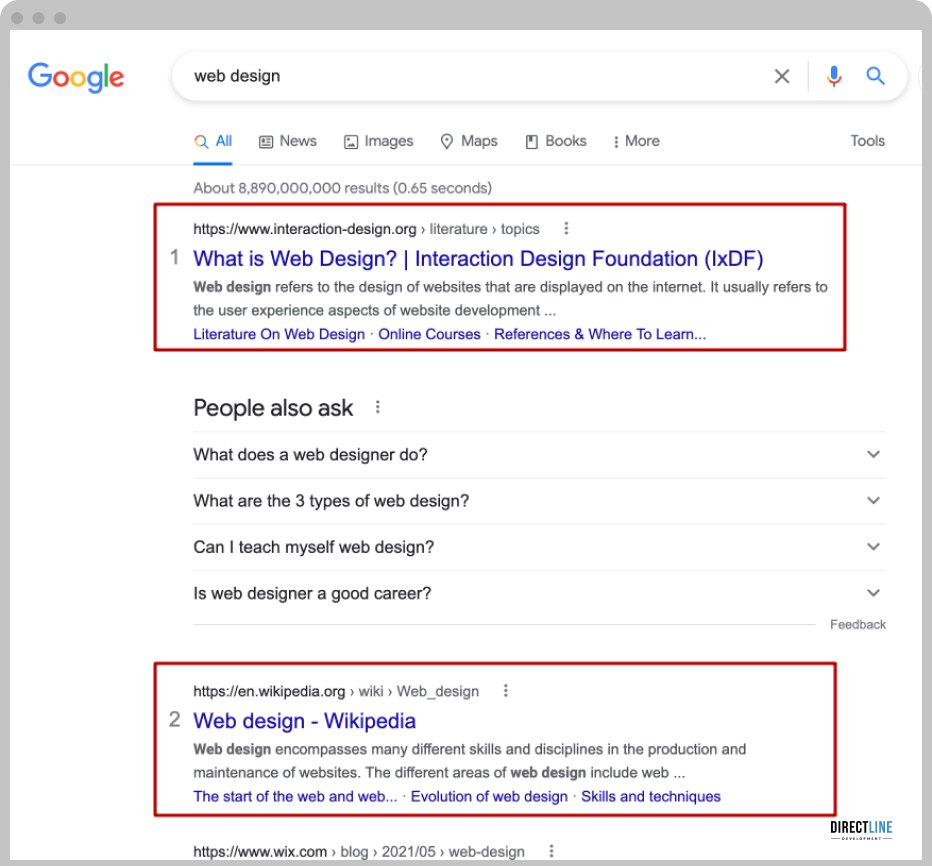
Query intent can affect how your site will appear in search engine results. If you use keywords that don't match your site during the semantic core selection process, you shouldn't expect success from this kind of optimization. The keywords in your content should match the search engine requests you want to rank for.
Value
The value of each phrase of a semantic keyword phrase is selected based on the needs of the site. The idea here is that if someone is willing to pay for clicks on a keyword phrase, then traffic on that keyword phrase must have a certain value.
But no one can guarantee that this phrase in your semantic core will attract customers to your site.
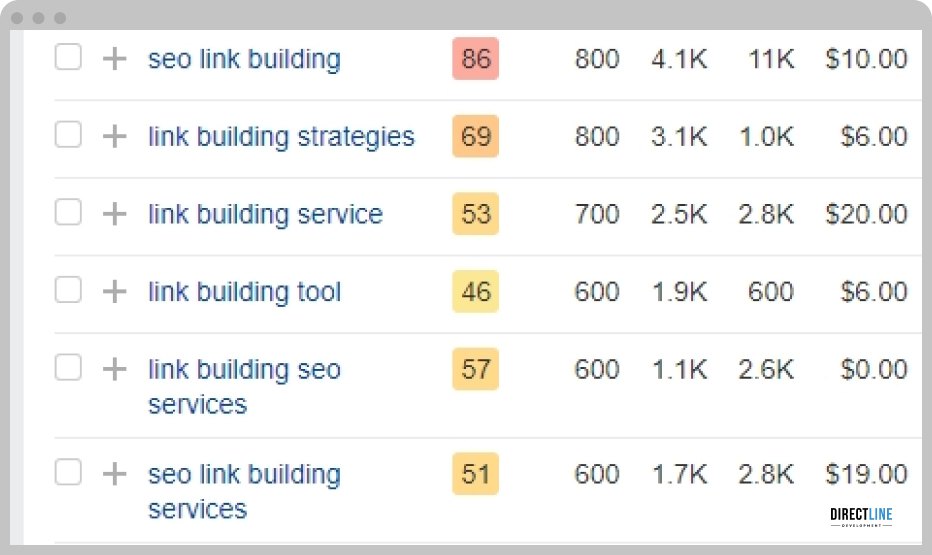
The Keyword Difficulty
There is another important factor worth paying attention to during semantic core formation. The Keyword Difficulty shows how difficult it will be to get in the search results for the selected phrase. Often keywords are used to create backlinks to the site or for internal relinking between pages of the same site. This allows you to describe the content of the page in a multiple but accessible way.
The keyword difficulty is affected by many factors:
- number (and quality) of backlinks;
- domain rating (DR);
- length of content, relevance, freshness;
- the use of the target keyword, synonyms, entities;
- search intent (intent);
- branding;
- and more.
Knowing how KD works, many people misuse the grade by setting the filter from 0 to 30, and focus on the easy-to-reach opportunities. They don't even try to cover keywords with high KD on their websites, and that's a big mistake for two reasons.
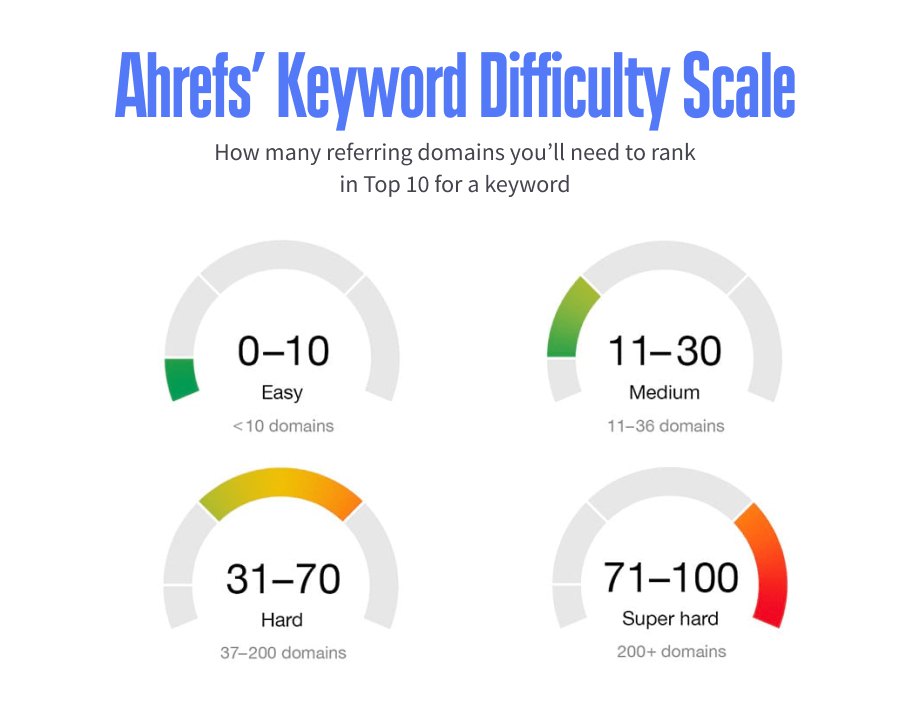
You should use high KD keywords sooner or later. Since you will need a lot of backlinks to rank, it makes sense to create your page and start promoting it as early as possible. The longer you put it off, the more leverage you miss out on at the start in favor of your competitors, making it difficult for yourself to get ahead of them in the future.
You should look at keywords with high KDs as opportunities to make more backlinks. The fact that pages in the top have a lot of backlinks is a sign of a "link-worthy" topic. In other words, if you master the topic, it can attract a lot of backlinks for you.
The number of backlinks required for promotion depends on this indicator. However, do not ignore semantic keywords with high KD. Since you will need a lot of backlinks to rank, it makes sense to create your page and start promoting it as early as possible. KD is not designed to keep you from targeting certain semantic keywords. It is meant to help you understand what it will cost you to rank for a given request and how "link-worthy" the topic is.

Just know that you should always manually analyze keywords before you take them on, rather than relying solely on any keyword complexity score of any given tool to make your final decision. No single keyword complexity score can simplify the complexity of Google's ranking algorithm down to a single number. Beware of tool builders who claim otherwise.
Since backlinks are an important ranking factor, it won't be easy to beat the rest of the pages in the rankings without attracting a large number of quality links.
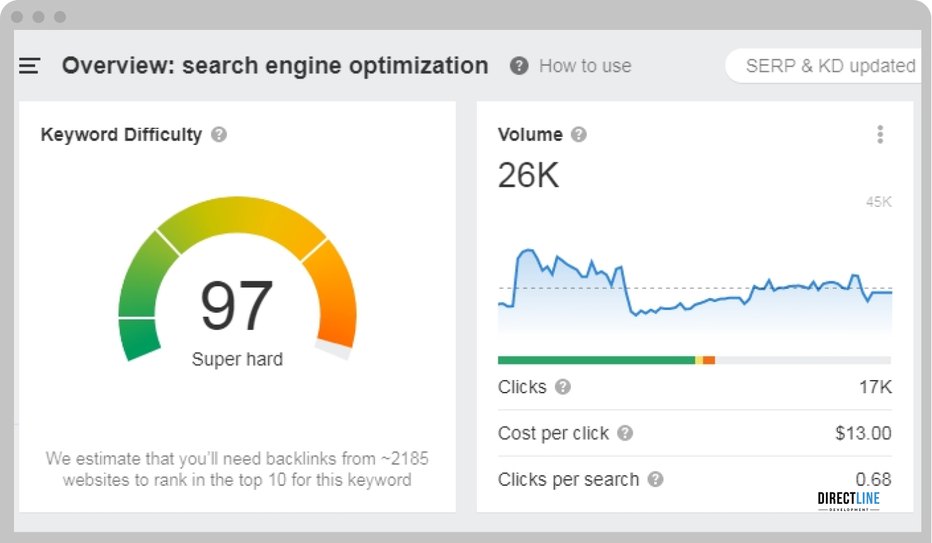
Despite all the mentioned, backlinks are not the only ranking factor in Google. So while phrase complexity is useful as a rough estimate of how difficult it is to get to the top, there are other factors to take into account during semantic core formation.
Once you have selected keywords that you want to include in the semantic core of the web site, it is worth making sure that these words suit you. To do this, a detailed manual analysis of each individual word on several parameters:
Clicks
The Clicks metric will provide information on the average number of monthly clicks by keyword core search engine results. Some keywords can bring dozens of customers to the site a day, while another query will not bring any.
This happens because Google answers the question directly in the search results. People don't have to click to find the information they're looking for.
Google is providing answers in search results for an increasing number of queries. That's what makes the ‘Clicks’ filter in Keyword Explorer so valuable. You can use it to get rid of ideas for keywords with scarce traffic potential.
Traffic Potential
When collecting the semantic core of the site, do not concentrate only on one or two keywords. Pay attention to synonyms and related words and phrases. Page ranking will not always be by the intended keywords, so do not underestimate similar requests.
Cost Per Click (CPC)
Cost Per Click (CPC) shows how much advertisers are willing to pay for each click on an ad for a keyword. While search demand for most semantic keywords remains about the same from month to month, its CPC can change at any minute. This means that those CPC values you see on third-party keyword tools are sample time snapshots. If you want real-time data, you have to use a special tool such as AdWords.
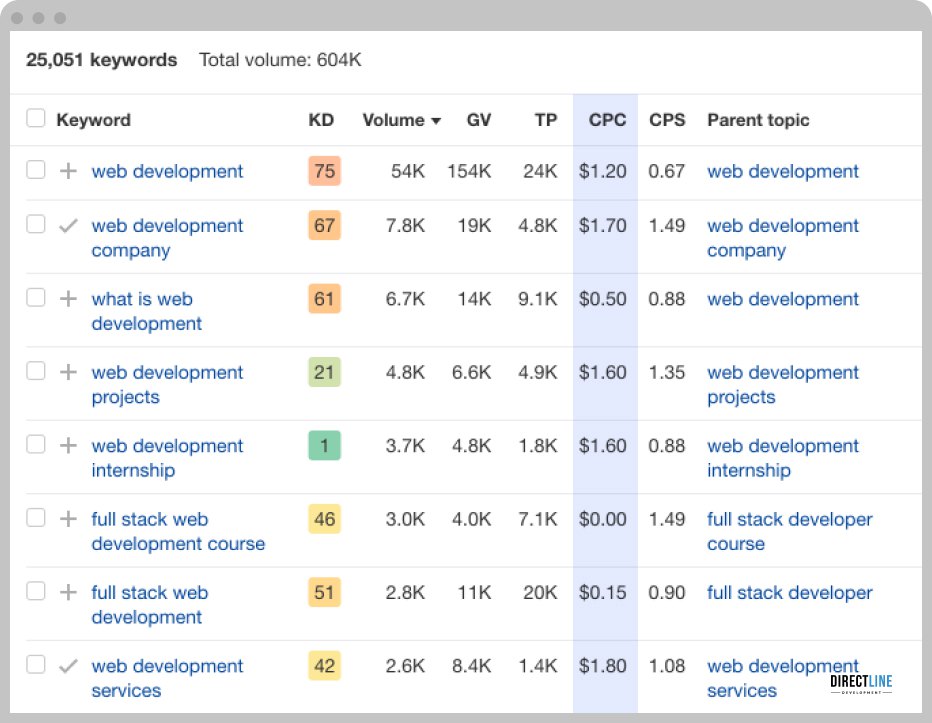
Divide a Semantic Core Into Few Sub-cores for Each Theme
If your company offers a few different, but industry-related services, there must be a difference between all of them in the semantic core. For example, for our website research, we gathered separate cores for each of our services and features, such as web design, web development, search engine optimization (SEO), logo design, animation и graphic design. All of these services are related to one in another in some ways and, therefore, it’s important to differentiate them by not using similar words. For instance, the core for “web design” cannot have words from the “graphic design” core. You need to demonstrate to Google that a relevant page that user searched for shows up and not, for example, something with keywords “logo design for a small business near me” if the page about web development.
How to Do a Quick Keyword Research in Your Niche
It’s fast and simple. After you build your semantic core, separate it by services and perform keyword research in your niche. Also, you need to find words that are repeated for better analysis. For instance, let’s say the most popular keyword in all searches of your semantic core is “company”, but your service is “web design”. What do you do? You need to promote the phrase “web design company”. This phrase will not likely going to be the most popular on your list, but if you combine all popular phrases, it would be a number one.
Update your search strategy to include conversational phrases that customers might be using to find you. https://t.co/S2hDaJlisnpic.twitter.com/39PyiagCgp
— Think with Google (@ThinkwithGoogle) May 31, 2018
Accordingly, if your “web design company” phrase moves up, don’t forget to use it in your web content using the correct and popular tails and longtails (near me, for small business, local, etc.), then your site will begin to show up in searches with these words organically.
Look at Competitors
When building a semantic core, you should never forget about competitors' sites. Use them for your site’s promotion. Paying attention to competitive organizations, you can use their weaknesses to stand out from their background and select new, more competitive keywords for your semantic core. You can use the following services to facilitate competitor keyword analysis: SpyWords, Advse, SimilarWeb.
The Importance of Stop Words in Keyword Research
This is an extremely important step that people tend to leave out in their research process for the website. Stop words prevent you from showing up in searches not related to your business. If you don’t use stop words in keyword research, then your semantic core will have a large amount of useless information, which will guarantee to negatively affect your work in the search engine. You need to remain competitive in the market that you’re in, not anything else unrelated to your business or service. Here is an example of stop words for our company-related theme, specifically “web design”.
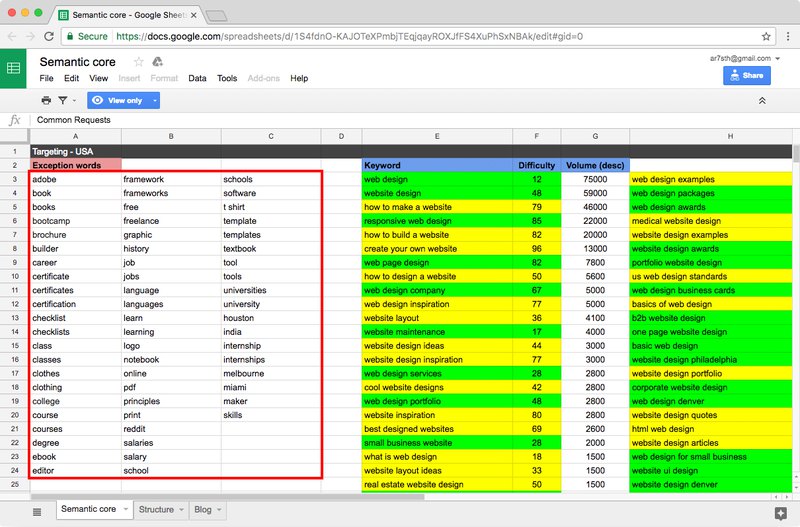
Your semantic core will decrease by 25-30% if you exclude searches with these words
Best SEO Techniques: How Many Words Should be in my Semantic Core?
Here is an answer we are sure you will love: it depends. That’s right. Depending on the site, the number of words will vary entirely. If you are a small business offering only a few services in a very specific location, you will only need several different combinations of keywords for your semantic core. If you are a large corporation or a store engaged in online marketing, you will need thousands of keywords. As a rule of thumb, a typical semantic core will consist of three or four strong HF words and at least 100 mid-range words.
Many companies make the mistake of using only a few mid-range and LF words, thinking them to be unimportant. The problem with this, however, is that substantial results come from the many variations of the phrase that become available from having a diverse list of these types of words in your semantic core. The greater the depth of your semantic core, the more likely your website will occupy top positions online within Google’s search result rankings.
We will discuss how to increase the number of searches your website receives from your semantic core in an upcoming article.
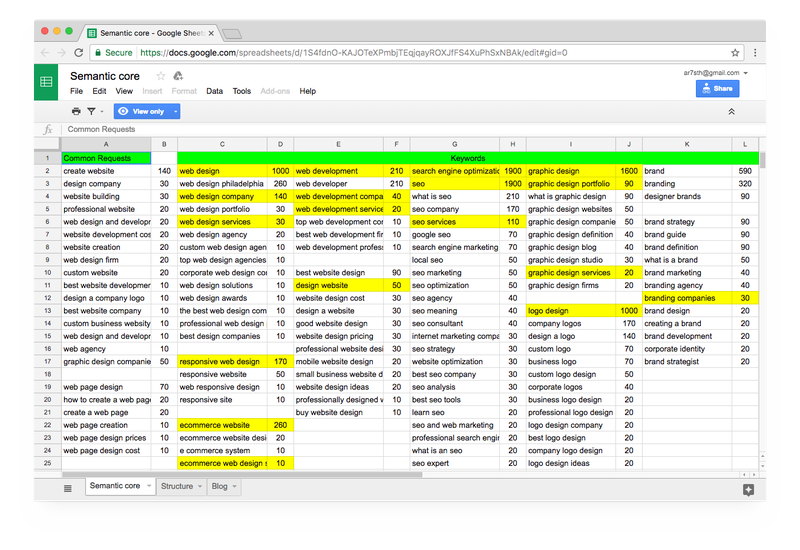
Summing it up
A company without a semantic core is doomed to fail in the realm of online marketing and search engine optimization. They will be lost without targeted keywords methodically chosen to represent their company in search engines. By compiling an accurate and informed list of keywords and phrases into a semantic core, you place your company or business in a position that is now relevant to potential customers. It is not something to be overlooked, but rather, the first step in laying a solid SEO foundation for your website. But just like a house, the foundation needs to be done correctly or else it will collapse on itself.
By following the advice in this article and the ones to follow, you are embarking on the best path forward in order to bring you and your company the best online results possible.
We understand that SEO can be intimidating at first, and this is why we welcome you to leave any questions you may have in the comments section below and we will get back to you promptly. At Direct Line Development we are experts in SEO and have years of proven tactics. If you enjoyed this article, feel free to check out our others or call us for more information. Cheers!




Comments
I'm glad there is something written about "tails", when I think of keywords I tend to only think of them as single words but this seems to be informing me that I can use whole, specific phrases to try to better target my audience. Great advice!
What is the average conversion rate of a website keyword that is placed in the top page of google? Can you substantiate this for people?
These tips are very useful and can help you to stay 1 step ahead in search engines.
If you are on the first search result place you will have at least a 10% conversion rate.
At what point should SEO start to score higher, if Semantic Core is thorough?
You will definitely see the first results in 5 to 6 months
Angelica, a Semantic core can help you target keywords that are less competitive, and and work those keywords into your blog. As an example, when we started our SEO campaign, we targeted "Custom web design in Philadelphia Area". Now we are top 10 in keyword "Web Design." Strategy plays a big role.
When doing SEO, you should focus on your core principals. By trying to cast too wide of a net, your results will be less successful.
This post is very helpful to get started with building a strategy for getting good SEO results. Spending some time with keywords and qualifiers is an important first step in becoming more visible on internet.
In a highly competitive world of searches, it's extremely important to have a great strategy in selecting keywords, tails and specifiers. It is imperative that you take your time with this task. Understanding your competitors and their strategies will give you a great start. What are people searching for? What's the volume of searches for those Keywords? It's only then, that you begin to construct a Semantic Core. The Content will be built once you have this task completed. SEO is ongoing and needs to be revisited often to make sure that your tactics are up to date.
It takes a while to get great results, but everything counts!!!
This is a great start for anyone looking to learn how SEO works. Already seeing some increase in rankings!
Great article on how to form an SEO strategy instead of just throwing darts as most people do when starting an SEO campaign.
I like that the article points out that LF and MF words must be used along with HF words. The more diverse text is, the better it is for SEO. Previously, I thought that HF words are more important, but it makes sense that variety is good because it will also appear more organic and will enhance the richness of text.
So many people/companies think that SEO is simply taking solid keywords and enveloping them into their content. Great to see something like this which highlights keyword research to begin the journey of building a site from the back to the front around a well-executed strategy.
Great article! It is true, depending on the size of your company and the services they provide, it depends on how many semantic words you need!
The content of your site needs to be original and structured. This is a great reference to how you should approach such important SEO matter.
Google Adwords is a great tool when it comes to finding the popular phrase which needs to be targeted. At the current rate, with so many websites and so many competitions, ranking is what makes or breaks a company.